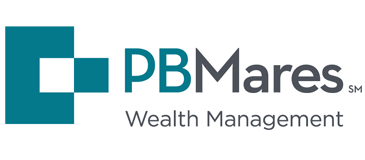It’s no secret that charitable giving is civically beneficial. For many people, it may be tax beneficial as well. 2020 was a landmark year for charitable giving, and 2021 looks to end on a similar high note. A common misconception is that all charitable giving has a tax benefit.
The Tax Impacts of Taking the Standard Deduction or Itemizing
At a very basic level, every taxpayer owes taxes on income subject to certain credits and deductions, which reduce the amount owed. Every taxpayer has the choice of taking a standard deduction or itemizing the deductions based on what is most advantageous. The standard deduction for a single taxpayer in 2021 is $12,550 ($25,100 for married filing jointly). The standard deduction increases for those 65 or older (or blind) by another $1,300.
There are several factors that go into calculating itemized deductions (such as the amount of mortgage interest or the amount donated to charity). When adding these factors together, if the amount totals more than the standard deduction, it is often advantageous to decide on itemizing deductions as opposed to taking the standard deduction.
Taking the standard deduction (which has increased in popularity since the Tax Cuts and Jobs Act in 2017) will not yield tax savings with regards to any charitable giving. Of course, there are exceptions for 2020 and 2021 as the CARES Act and the Consolidated Appropriations Act have allowed those taking the standard deduction to deduct up to $300 (per individual). This is a helpful, albeit temporary rule if one is charitably inclined. Itemizing deductions does not always result in a tax deduction.
Having a charitable deduction strategy is important. Taxpayers can maximize the tax benefits of contributions, especially if it’s better to itemize in one year versus taking the standard deduction. For example, a taxpayer might bunch two years of charitable contributions into one tax year.
Qualified Charitable Deduction
Whether taxpayers itemize or take the standard deduction, those aged 70 1/2 or older may be able to take a Qualified Charitable Deduction (QCD) from their IRA. Funds must be withdrawn directly from the IRA and made out directly to a qualified charitable organization. Doing so will reduce the otherwise ordinary income that would be attributable to this withdrawal.
In other words, distributions from an IRA (after age 59 1/2) are taxed at the individual’s ordinary income rates. If one qualifies for a QCD, this distribution will not be taxable income. QCDs are limited to $100,000 per person per year. An additional benefit of making a QCD once the taxpayer reaches age 72, the amount distributed as a QCD also reduces the Required Minimum Distribution (RMD) amount.
Interested in maximizing a Giving Tuesday donation? Read this first.
Charitable Giving Options
Taxpayers have options on what can be given to charitable organizations as well. The most effective strategy should be discussed with one’s financial advisor and CPA; generally speaking, the most common choices are cash donations or appreciated securities.
If donating from a taxable account, it is generally more advantageous to donate appreciated securities rather than cash. Donating appreciated securities allows the taxpayer to take the tax deduction (again…if itemizing) without paying capital gains on the appreciation within the stock. It is not recommended to sell stock (realize the capital gain) and then send a charity the cash. The charity is thereafter responsible for liquidating the stock for cash.
Schwab Charitable estimates that fully 60 percent of its contributions in fiscal year 2021 were non-cash assets, like publicly traded securities, restricted stock, and private business interests.
Lastly, some taxpayers have found Charitable Giving Funds (CGFs) to be beneficial. CGFs allow a taxpayer to frontload cash or appreciated securities into a fund they have set up. For itemizers, the tax deduction is realized in the year the CGF is funded as opposed to when the taxpayers make grants from the CGF (which can be anytime). For some taxpayers, frontloading their donation with a higher dollar amount means they can take advantage of the higher itemized deduction as opposed to the standard deduction.
Also note that businesses may contribute to a qualified organization up to 25 percent of taxable income as opposed to the usual cap of 10 percent. This was a change in tax law from the CARES Act.
It is important to note that the charitable institution must be a qualified organization. Charitable organizations that are tax exempt under IRC 501(c)(3) qualify, so be sure to confirm with the organization beforehand. To count as a charitable deduction in 2021, the organization must receive the donation and process it by December 31, 2021. Note that some non-cash assets might need extra processing time.
The end of the year is a popular time for many taxpayers to make last-minute charitable gifts, especially if doing so will result in a more favorable tax position for the year. If this is one of your year-end tax planning strategies, or if you’re considering donating more in 2022, contact Shelly Braden, CFP®, BFA™, Wealth Advisor with PBMares Wealth Management or your PBMares tax advisor.
About the Author:





